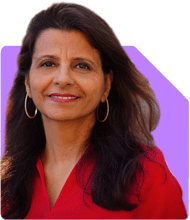Should I Invest in ULIPs and Mutual Funds for My Daughters' Education and Marriage?
Ramalingam Kalirajan |10071 Answers |Ask -Follow
Mutual Funds, Financial Planning Expert - Answered on Jul 18, 2024
He has an MBA in finance from the University of Madras and is a certified financial planner.
He is the director and chief financial planner at Holistic Investment, a Chennai-based firm that offers financial planning and wealth management advice.... more

Hi Sir, I am 43 years, i am working in dubai. I have 3 daughters and i want to save more for my daughters education and marriages.. One of my friend suggested to invest in ULIP and i started to investing annaully 255,000 from 2022 (yearly 45k for term insurance, rest money invested in stocks). Could you please guide me, investing in ULIP is good option and i can get good rerurn if i hold for 15-20 years... Also please advise me about the mutual fund investment.. i am planning to invest 5lakhs (50k lumpsum in 10 mutual funds) for 10-15 years... Is this right way to invest, pls guide me the right way ti invest in MF
Current Financial Overview
Age: 43 years old
Location: Dubai
Dependents: Three daughters
Current Investments:
ULIP: Annual investment of Rs. 255,000 (Rs. 45,000 for term insurance, rest in stocks) since 2022
Future Investment Plans: Planning to invest Rs. 5 lakhs (Rs. 50,000 lump sum in 10 mutual funds) for 10-15 years
Good Remarks
Future Planning: Prioritizing your daughters' education and marriages is admirable.
Investment Awareness: Seeking guidance to optimize your investments is a positive step.
Assessment of Current ULIP Investment
ULIP Features
Combination of Insurance and Investment: ULIPs provide both life cover and investment opportunities.
Lock-in Period: ULIPs typically have a lock-in period of 5 years.
Disadvantages of ULIPs
High Charges: ULIPs often have higher charges compared to mutual funds. These include premium allocation, policy administration, and fund management charges.
Lower Returns: The charges can significantly reduce the overall returns. ULIPs may not perform as well as mutual funds.
Recommendation on ULIPs
Evaluate Continuation: Assess the performance and charges of your ULIP. Consider switching to mutual funds if the charges are high and returns are unsatisfactory.
Suggested Mutual Fund Strategy
Benefits of Mutual Funds
Professional Management: Managed by experienced fund managers.
Diversification: Spreads risk across various sectors and companies.
Flexibility: Offers different schemes to match your investment goals and risk tolerance.
Recommended Approach
Avoid Too Many Funds: Investing Rs. 50,000 in 10 mutual funds is excessive. It dilutes the benefits of diversification and becomes hard to manage.
Focused Investment: Instead, choose 3-4 well-performing mutual funds.
Suggested Mutual Fund Categories
Equity Mutual Funds
Large-cap Funds: These invest in large, stable companies. Suitable for long-term growth with moderate risk.
Mid and Small-cap Funds: These invest in medium and small-sized companies. Offer higher growth potential but with higher risk.
Debt Mutual Funds
Debt Funds: Invest in fixed income securities. Suitable for stability and regular income.
Balanced Funds: Mix of equity and debt. Offers moderate growth with lower risk.
Investment Strategy
Lump Sum vs. SIP
Lump Sum Investment: Can be beneficial if invested in a growing market. However, it’s riskier due to market volatility.
SIP (Systematic Investment Plan): Invest a fixed amount regularly. Helps in averaging the purchase cost and mitigates market timing risk.
Suggested Investment Plan
For Rs. 5 Lakhs Investment
Equity Funds: Invest Rs. 3 lakhs in 3 equity mutual funds (Rs. 1 lakh each). Choose large-cap, mid-cap, and small-cap funds.
Debt Funds: Invest Rs. 2 lakhs in 2 debt mutual funds (Rs. 1 lakh each). Choose funds with a good track record.
Systematic Investment Plan (SIP)
Monthly SIP: Consider starting SIPs in these funds. It helps in building wealth over time and reduces risk.
Financial Goals Planning
Daughters' Education and Marriages
Separate Fund: Create dedicated funds for each goal. This helps in better tracking and management.
Long-term Horizon: For goals 10-15 years away, focus on equity mutual funds for higher returns.
Risk Management
Insurance: Ensure adequate health and life insurance coverage. It secures your family’s financial future.
Emergency Fund: Maintain an emergency fund covering 6-12 months of expenses.
Tax Planning
Tax-saving Investments: Utilize options like ELSS to reduce taxable income and grow wealth.
Efficient Filing: File your taxes accurately and seek professional help if needed.
Final Insights
Regular Review: Periodically review and rebalance your portfolio to align with your goals.
Professional Guidance: Consult a Certified Financial Planner for tailored advice and strategies.
Stay Informed: Keep learning about personal finance and stay updated on market trends.
Best Regards,
K. Ramalingam, MBA, CFP,
Chief Financial Planner,
www.holisticinvestment.in
You may like to see similar questions and answers below
Ramalingam Kalirajan |10071 Answers |Ask -Follow
Mutual Funds, Financial Planning Expert - Answered on May 26, 2024
Ramalingam Kalirajan |10071 Answers |Ask -Follow
Mutual Funds, Financial Planning Expert - Answered on Jun 18, 2024
Ramalingam Kalirajan |10071 Answers |Ask -Follow
Mutual Funds, Financial Planning Expert - Answered on Jul 17, 2024
Ramalingam Kalirajan |10071 Answers |Ask -Follow
Mutual Funds, Financial Planning Expert - Answered on Jul 26, 2024
Komal Jethmalani |410 Answers |Ask -Follow
Dietician, Diabetes Expert - Answered on Aug 02, 2025
Prof Suvasish Mukhopadhyay |2744 Answers |Ask -Follow
Career Counsellor - Answered on Aug 02, 2025
Prof Suvasish Mukhopadhyay |2744 Answers |Ask -Follow
Career Counsellor - Answered on Aug 02, 2025
Dr Nagarajan J S K |2129 Answers |Ask -Follow
NEET, Medical, Pharmacy Careers - Answered on Aug 01, 2025
Dr Nagarajan J S K |2129 Answers |Ask -Follow
NEET, Medical, Pharmacy Careers - Answered on Aug 01, 2025
Dr Nagarajan J S K |2129 Answers |Ask -Follow
NEET, Medical, Pharmacy Careers - Answered on Aug 01, 2025
Radheshyam Zanwar |6064 Answers |Ask -Follow
MHT-CET, IIT-JEE, NEET-UG Expert - Answered on Aug 01, 2025
Dr Nagarajan J S K |2129 Answers |Ask -Follow
NEET, Medical, Pharmacy Careers - Answered on Aug 01, 2025
Ramalingam Kalirajan |10071 Answers |Ask -Follow
Mutual Funds, Financial Planning Expert - Answered on Aug 01, 2025
Ramalingam Kalirajan |10071 Answers |Ask -Follow
Mutual Funds, Financial Planning Expert - Answered on Aug 01, 2025





















